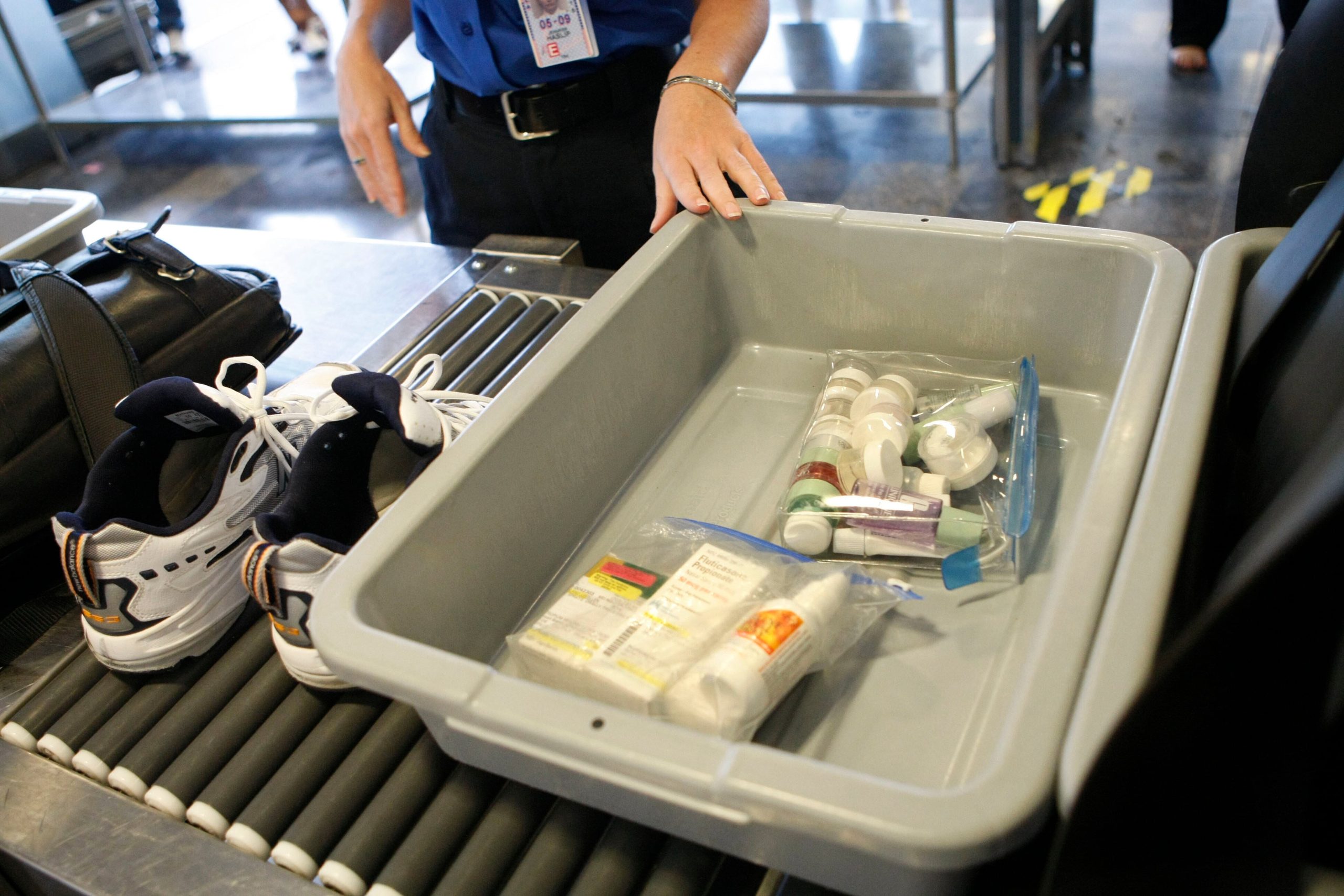Potential Changes to Carry-On Liquid Restrictions at US Airports Spark Debate
The possibility of easing restrictions on liquids in carry-on bags at American airports has generated excitement among travelers weary of the security checkpoint routine. However, the reality is more complex, with concerns lingering about security vulnerabilities and the uneven implementation of advanced screening technology across the nation’s airports.
Homeland Security Secretary Kristi Noem recently hinted at a potential shift in liquid restrictions, suggesting that the current 3.4-ounce limit might be revisited. This announcement raised hopes that travelers could soon carry larger quantities of liquids, gels, and beverages through security without the need to discard them.
“The liquids, I’m questioning,” Noem stated, adding that the Transportation Security Administration (TSA) has implemented a “multilayered screening process” that allows for adjustments to security protocols while maintaining safety standards.
While the TSA has acknowledged the ongoing evaluation of security measures and the desire to improve the travel experience, any changes to liquid restrictions would follow established procedures, similar to the recent decision allowing travelers to keep their shoes on at checkpoints.
The Shadow of Past Threats
The current restrictions on liquids in carry-on bags were implemented in response to a 2006 plot in the United Kingdom, where terrorists planned to detonate liquid explosives disguised as sports drinks on commercial airliners. This plot exposed a significant vulnerability and prompted a global overhaul of airport security protocols.
In that case, authorities discovered the plot after becoming suspicious of a man returning from Pakistan with an unusual combination of powdered drink mix and a large number of batteries. Subsequent surveillance revealed a bomb-making operation in a London apartment, where conspirators were experimenting with explosive mixtures in beverage bottles. The plan involved creating an explosion large enough to create a hole in an aircraft.
The conspirators communicated through coded emails, discussing quantities of aftershave that investigators later realized corresponded to the amount of hydrogen peroxide they had purchased.
The Challenge of Detection
Since 2006, the TSA and international security agencies have limited carry-on liquids to 3.4 ounces (100 milliliters), based on the belief that this quantity is insufficient to create a catastrophic explosion. The restrictions applied to all types of liquids because traditional X-ray machines could not distinguish between harmless substances and potential explosives.
Advanced Technology: A Partial Solution
The key to potentially easing liquid restrictions lies in the deployment of advanced screening machines that use computed tomography (CT) to create clearer images of the contents of carry-on bags. These scanners allow screeners to view items in both two-dimensional and three-dimensional formats, enabling them to identify potentially dangerous materials more effectively.
According to TSA workers, this new technology is transformative, allowing screeners to identify objects that would have previously been hidden or obscured. The enhanced clarity eliminates much of the guesswork involved in the screening process.
Uneven Implementation and Lingering Concerns
Despite the promise of advanced screening technology, its implementation across US airports has been uneven. As of recently, only 255 of the nation’s 432 airports have installed the new CT scanners. The largest airports were prioritized, but full deployment is not expected until 2043.
This disparity raises concerns about potential confusion if liquid restrictions are eased only at certain airports. Travelers could face the frustrating experience of being allowed to carry larger quantities of liquids on departure, only to have them confiscated upon their return.
The cost of the new scanners, which exceeds $2 million per unit, and the logistical challenges of installing them in existing airport infrastructure contribute to the slow pace of implementation. Airports often need to reinforce floors and redesign checkpoints to accommodate the larger machines.
Experts Urge Caution
Some experts advise against prematurely easing liquid restrictions, citing the incomplete deployment of advanced screening technology. They suggest waiting until more airports have upgraded their systems to ensure consistent security standards.
Jeff Price, an aviation security expert, supports the recent change allowing travelers to keep their shoes on, provided that random screenings continue. However, he believes that easing liquid restrictions at this stage is premature, despite the existence of other security layers.
Past Vulnerabilities and Ongoing Vigilance
The Department of Homeland Security’s Inspector General has previously identified vulnerabilities in TSA screening procedures. A 2015 report found that TSA officers failed to detect weapons or explosive materials carried by undercover inspectors in 95% of cases.
While these findings raise concerns, TSA workers defend their record, noting that no plane has been downed due to a security breach since the agency’s inception. They emphasize the importance of maintaining vigilance and continuously improving security protocols.
“Nothing large has been able to make it through our system since we’ve taken over screening. We’ve protected the skies for 22 years,” stated a representative of TSA workers, adding that even minor oversights do not necessarily lead to catastrophic consequences.

